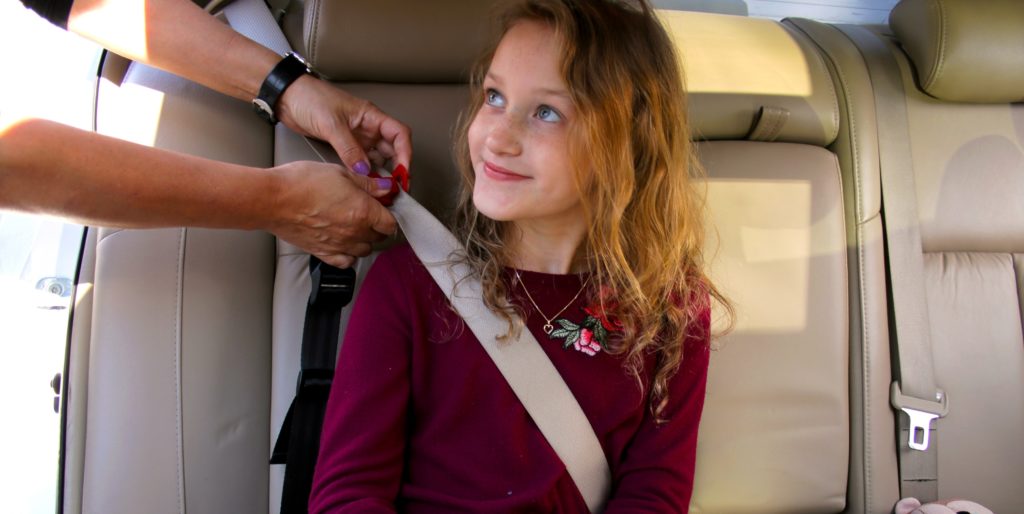comfiGO®: Comfortable, Convenient and Safe Car Child Booster Seat | ClypX®
Posted by Robert on Apr 28th 2021

Taking care of a child is one of the biggest, most important responsibilities we have as parents. Keeping our children safe while in the car is a serious task, especially considering research and data show that car accidents are one of the leading causes of childhood injuries and death.
In order to help minimize the possibility of a child getting injured in a car accident, we need to consider all factors and take a holistic approach to safety. Some of these factors include the safety of the car itself and the appropriate use of a child restraint system.
The Importance of Car Safety
For starters, we should be driving as safe a car as possible. Usually, larger and higher-positioned cars tend to be safer. Your car should definitely be equipped with advanced safety features like front and side airbags, side screens, seat belt pretensioners, and seat belt loaders that are designed for kids. It's also important to drive a car with a very good crash test rating. And of course, as far as driving habits go, you should obey all laws on the road and adjust your driving according to road conditions.
Unfortunately, even if we follow all of the advice mentioned above we still have another factor to consider, one that is out of our control: other drivers.
Other drivers (and their bad habits on the road) can cause an accident even when we are doing everything we can to keep our kids safe. Since there's no way to guarantee that we will never be in an accident, we can at least make sure that all of the elements that are within our control are as safe as possible.

Child Restraint System Safety Guidelines
No matter the car we drive or our driving habits, we should always have our child use a CRS (child restraint system) that is appropriate for their age, height, and weight.
The NHTSA (National Highway Traffic Safety Administration), AAP (American Academy of Pediatrics), and many other agencies and organizations advocate that children should be in a child restraint system until they are 12 years old or are at least 57 inches tall. However, the practical approach to height will vary since the cars and seat belts in which a child is sitting may vary greatly. Also worth mentioning is that many European countries have adopted a law requiring kids to use a child restraint system until the age of 12, or until they are 135cm tall (almost 54 inches).
Child Restraint System Considerations
There are many different types of child restraint systems on the market. They include:
- Rear-facing infant and toddler car seats
- Forward-facing child car seats
- High-back child booster seats
- Backless child booster seats
- Vests or harnesses
Each one of these has their own advantages and works well in keeping children safe; there’s not just one CRS that is universally deemed the safest. That’s because safety depends on many factors, such as the willingness of parents or caregivers to follow the rules of the road, the type of accidents that occur, the particular car in which each CRS is used, the knowledge parents or caregivers have on how to use a particular CRS, the child’s physical size, the child’s habits, and so on.
One of the main factors in how safe any particular CRS works is how complicated it is to install and use properly. We must remember that, no matter how well a device performs in safety tests, the more complicated it is to install, the higher the likelihood that it will be installed wrong. Furthermore, the more inconvenient a CRS is to deal with, the more likely that it will not be used at all, which is very dangerous. A device that is not only simple to install, but is also convenient to use will more likely be used properly in every situation.
Click to Learn The Dangers of Misusing Child Restraint Systems
According to a National Child Restraint Use special study performed by the US Department of Transportation, of all car seats and booster seats that are installed, 46% are installed incorrectly with at least one misuse. Out of that 46%, 24% are backless booster seats and 16% are high back booster seats. When drivers were asked, 73% were confident or very confident that the car seat or booster seat was installed correctly while only 1% were not confident.
This is exactly why researchers, engineers, and experts agree that for real-world scenarios, the best CRS checks these boxes:
- Passes safety standards (industry crash tests, etc.)
- Is easy to use
- Is comfortable for child and convenient for parents
Additional attributes like good portability, light weight, and small size are advantages that make a CRS even better because it will be successfully used in more situations, such as while carpooling or when traveling in taxis or Ubers. A product that checks all of these boxes has a real chance of saving the greatest number of children from unnecessary injuries, or even death.
Don’t Wait
As we can see, there are many factors that contribute to child passenger safety. We are often unable to account for all of these factors in the real world for many different reasons. However, we always should strive to have our children restrained while riding in our cars. If your child is not adequately protected, they are at risk. It’s as simple as that. It's true that we go through stages in life where we cannot fully control what vehicle we drive, and that there are additional factors like weather conditions and other drivers' behavior that are fully out of our control. Choosing a safe and convenient child restraint system, however, is something that we can control.
As THE foremost booster seat solution for both kids and parents, start using comfiGO today!
